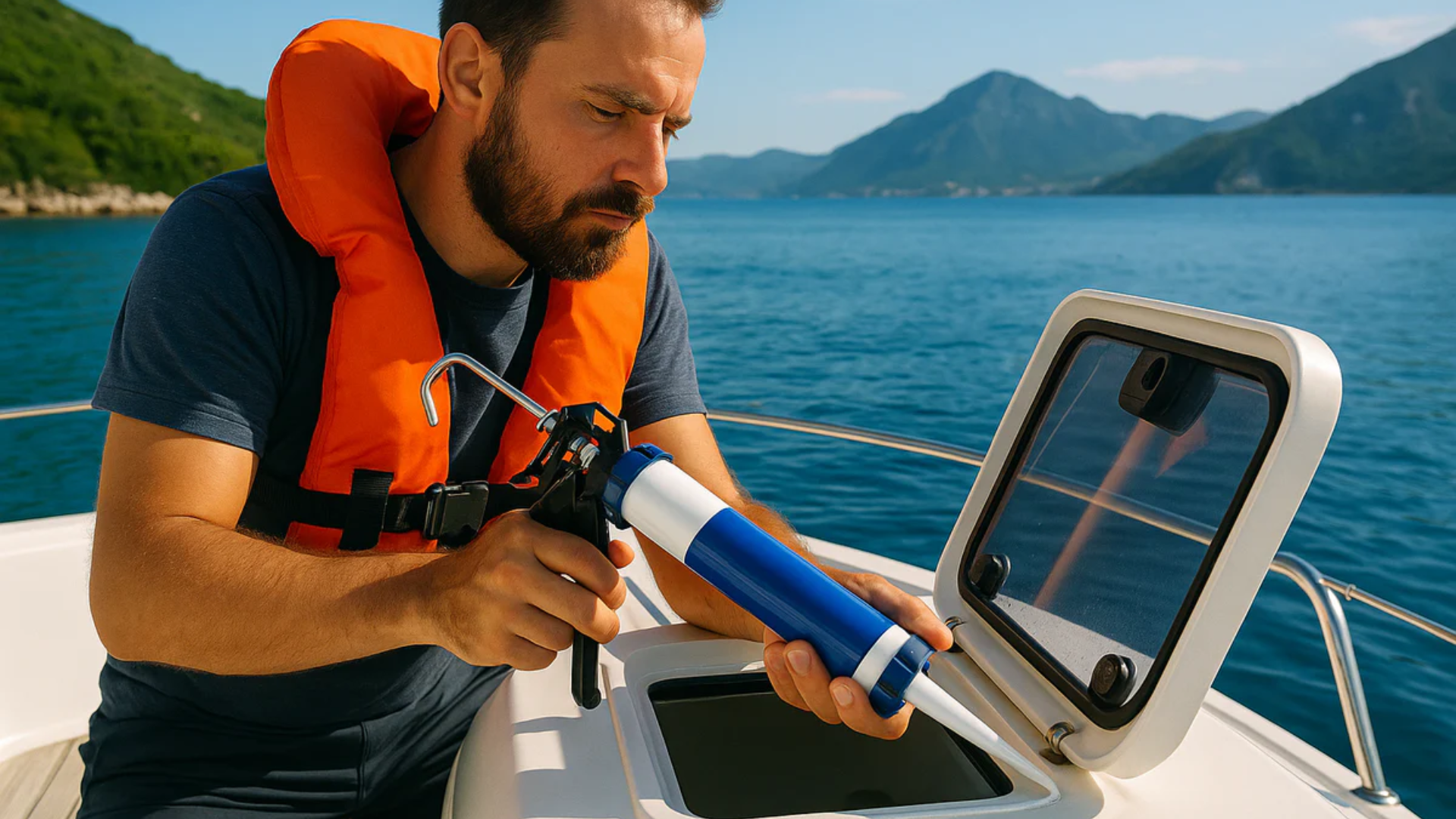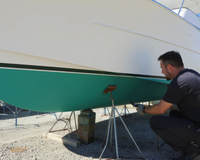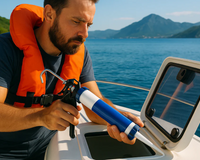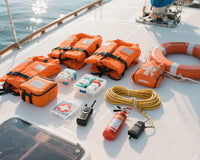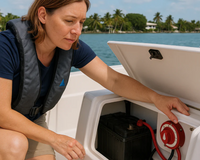Choosing the Right Sealant or Caulking
Installing a new portlight, resealing deck fittings, or plugging a hole? The right marine sealant or caulking is crucial to waterproofing, flexibility, and long-term durability. Choosing the wrong sealant can lead to early failure, permanent adhesion issues, or damage to surrounding surfaces.
If you are going to be bedding plastic material or gaskets then silicone is a good solution. Silicone should only be used above the waterline and should never be used on areas that need to be sanded or painted. There are a lot of silicone products on the market, including 3M and BoatLife.
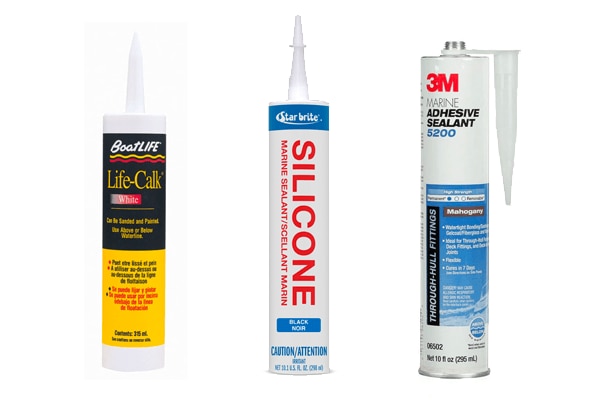
With so many sealants available, how do you know which one is right for your project? Let’s break it down.
Key Factors to Consider When Choosing a Boat Sealant
Before selecting a sealant, ask yourself these questions:
Above or Below the Waterline? – Some sealants work only above the waterline, while others are safe for submerged areas.
Temporary or Permanent Bond? – Will this part need removal or replacement in the future?
Will It Be Painted? – Not all sealants are paintable.
Material Compatibility? – Different sealants work better for plastic, fiberglass, wood, or metal.
A good marine sealant should be:
Waterproof
Flexible (to accommodate movement and expansion)
UV-Resistant (to prevent breakdown from sun exposure)
Chemical & Petroleum-Resistant
Types of Boat Sealants & Their Best Uses
1. Silicone Sealants – Ideal for Windows, Hatches & Gaskets
If you’re sealing plastic materials, gaskets, or window frames, silicone is an excellent choice.
Best for: Windows, hatches, plastic fittings
Pros: Flexible, waterproof, easy to apply
Cons: Cannot be painted, weak adhesion to some surfaces
Important:
- Use only above the waterline—silicone lacks the strength needed for submerged applications.
- Not ideal for areas requiring sanding or painting.
Popular Brands: 3M, BoatLife
2. Polyurethane Sealants – Strong, Versatile & Long-Lasting
For above and below waterline applications, polyurethane sealants are among the most reliable.
Best for: Deck fittings, through-hulls, structural bonding
Pros: Strong bond, flexible, long-lasting
Cons: Difficult to remove once cured, not compatible with bare wood or plastic-to-fiberglass applications
Top Choices:
- 3M 4200 – Medium-strength; allows removal if needed
- 3M 5200 – Permanent bond; highly durable (ideal for thru-hulls)
Pro Tip:
- Do not use polyurethane sealant on teak or other bare wood surfaces.
- Mask off surrounding areas before application to minimize cleanup.
3. Polysulfide Sealants – Great for Wood & Long-Term Applications
If you’re sealing wood, deck hardware, or fuel tank fittings, a polysulfide sealant is your best bet.
✔️ Best for: Wooden decks, through-hulls, marine hardware
✔️ Pros: Long-lasting (20+ years), compatible with wood, resists chemicals and fuels
✔️ Cons: Does not bond well to acrylic, takes longer to cure
Recommended Product:
- BoatLife Life-Caulk – One of the most durable polysulfide-based marine sealants.
Important:
- Works above and below the waterline.
- Remove excess immediately to ensure a clean finish.
Whatever sealant you choose, always make sure your surfaces are clean before application and watch out for the temperature per the manufacturer's recommendations. Spend some time doing some research before you choose a caulk or sealant and avoid dangerous or costly situations.
You just put a hole in your boat! On purpose of course but now what do you do? Holes allow water into the boat and that’s not the object of the game. But when you have to put a hole in your boat so that you can install a new portlight or run an antenna wire or put in a thru hull fitting for water intake or a transducer or any of the hundreds of other reasons, being prepared with the right marine grade sealant will set you up for success. But there are so many sealants available online at Go2Marine.com, how do you choose the correct one? Factors to take into consideration include, is area to be sealed above the waterline or below it? Are you going to need to replace this part frequently or do you want it sealed forever? Are you going to want to paint over it? There is a boat sealant available for every application, but not every sealer works for every job. Choose wisely.
If you are going to be bedding plastic material or gaskets around windows and hatches, then silicone is a good solution. Silicone should only be used above the waterline and should never be used on areas that need to be sanded or painted. For applications where you will need to paint the surface after sealing a latex based sealant may prove to be a better option. There are a lot of silicone products on the market, including 3M and BoatLife.
Sealants containing polyurethane are a good choice for surfaces above and below the waterline. Popular brands include 3M's 4200 and 5200. 3M 5200 sealant is a personal favorite for all applications. It’s very versatile, usually easy to find and has been trusted by mariners for decades. If you need to seal a hole, then polyurethane is a good choice due to its ability to cure quickly and last nearly a decade. However, make sure to not use it on teak or other bare wood surfaces or to seal, plastic to fiberglass. A good technique to save yourself some clean up time and a messy job is to tape and mask off areas you don’t want sealant adhering to, like you would for painting.
Another option is marine caulk containing polysulfide like Boat Life Life-Calk which can last for over 20 years. Products containing polysulfide are great to have around as they can be used above and below the waterline. Unlike polyurethane, polysulfide can be used on wood but does not work well on acrylic. It’s a great sealant for hardware as well. Make sure you apply enough of it for it to maintain a strong grip. Wipe away excess immediately with a damp cloth or plastic scraper.
Pro Tips for a Perfect Sealant Application
Prepare the Surface Properly
- Ensure all surfaces are clean and dry before applying sealant.
- Follow the manufacturer’s surface preparation instructions for best results.
Check Temperature & Curing Time
- Temperature affects curing time. If it’s too cold, the sealant may not cure properly.
- A quick trick: Warm up the sealant tube by placing it in a bucket of warm water (within manufacturer guidelines) for 20-30 minutes before application.
Mask Off Areas You Don’t Want to Seal
- Use painter’s tape to protect areas where you don’t want excess sealant to adhere.
Remove Excess Sealant Immediately
- Once cured, marine sealants are difficult to remove. Wipe away any spills or excess with a damp cloth or plastic scraper before it sets.
Whatever sealant you choose always make sure your surfaces are clean and dry following the manufactures recommendations for surface preparation before application. Once you have found the right tool for the job visit Go2Marine for the best prices and fast easy shipping.
Tips for Sealing On Boats
Question: If a seam is too deep between wooden planks, can cotton be used to partially fill it?
Answer: Yes, Life-Caulk or polysulfide type material is much too expensive to completely fill the seam so yes, cotton can be used.
Question: Once applied can I remove 3M 5200?
Answer: More than likely, the answer is no. There are some very strong chemicals on the market like DeBond, that you can try to use to remove 5200.
Question: Can I apply new silicone sealant over an old sealant?
Answer: It is recommended to completely remove the old silicone and clean the area before trying to add new silicone.

